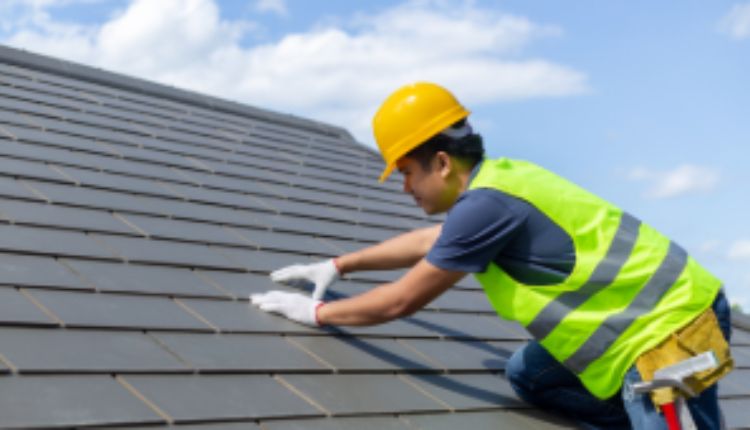Most business owners don’t think about their roofs until something goes wrong. A leak, a draft, or an unsightly stain appears—and suddenly, the Roofing becomes priority number one. But waiting for a problem isn’t just reactive—it’s risky and costly. The smarter approach is regular maintenance, and it’s not as complex or expensive as many think.
What makes commercial roof maintenance different from residential? Everything. The size, materials, traffic, drainage, and equipment on commercial roofs demand a different strategy. If you’re running a business, especially in a place like Boston where weather takes its toll, you can’t afford to ignore this part of your building.
Here’s a fresh look at roofing maintenance—less about ladders and more about smart habits, clear roles, and preventing problems before they escalate.
-
Treat the Roof Like a Business Asset
This may sound obvious, but most companies don’t treat their roof like an asset. They treat it like a background fixture—until something breaks. Your roof protects your people, your equipment, your inventory, and your daily operations. If it fails, it doesn’t just leak. It disrupts.
Consider creating a basic roof maintenance budget just like you would for IT, HVAC, or insurance. It doesn’t need to be huge. But allocating even a modest annual amount to inspections, cleaning, and small repairs can save thousands in damage control.
-
Make Maintenance Part of Operations, Not Emergencies
It’s easy to put roof care off. After all, if it’s not leaking, it’s working, right? Not necessarily. Small issues like loose flashing, blocked drains, or ponding water might not cause immediate problems, but they silently degrade the system over time.
The key is consistency. Schedule inspections twice a year—ideally in the spring and fall. These seasons are natural transition points where you can spot issues caused by the previous extreme (heat or snow) and prepare for the next.
Keep a digital log of each inspection. Photos, notes, contractor reports—it’s all useful data that helps spot patterns, identify recurring trouble spots, and track aging materials.
-
Assign Roof Responsibility Internally
Most businesses have no one officially responsible for the roof. That’s a problem. You don’t need a roofing expert on staff, but assigning a facilities manager, maintenance supervisor, or even a general admin to oversee roof-related tasks can keep maintenance from falling through the cracks.
This person becomes the point of contact for Roofing inspections, documentation, and contractor coordination. When someone is responsible, things get done.
-
Keep the Roof Clean—and Not Just for Looks
Debris on a flat commercial roof is more than an eyesore. Leaves, trash, and organic matter trap moisture. That moisture breeds mold and weakens materials. It also adds unnecessary weight.
Make roof cleaning part of a quarterly maintenance routine. It doesn’t need to be a deep clean every time. A simple sweep and check of drains and scuppers can prevent big problems. Don’t forget to clear out roof-mounted HVAC units and skylight edges—debris loves to hide there.
-
Watch for These Silent Threats
Most roof damage doesn’t announce itself. It creeps in. Knowing what to look for helps:
- Ponding water: Water that stays longer than 48 hours after rain can damage the membrane.
- Blisters or bubbles: These can signal trapped moisture or air under the surface.
- Cracks at seams or flashing: Small separations can expand and allow water in.
- Blocked drains or downspouts: Water needs a clear path off the roof.
- Damaged edge details: Wind uplift often starts at the edges.
Train your staff (especially maintenance or custodial teams) to spot these red flags during routine building checks. The earlier they’re caught, the easier and cheaper they are to fix.
-
Be Smart About Roof Access
Commercial roofs often have a surprising amount of foot traffic—technicians working on HVAC, solar panels, or vents. Each visit brings potential wear and tear. Over time, foot traffic can compress insulation or damage membranes, especially if the right pathways aren’t in place.
Install walk pads or designated access routes. Make sure anyone working on the roof signs in, logs their visit, and follows safety and material protection protocols. Even simple steps like requiring soft-soled shoes or limiting access to dry conditions can extend the life of your roofing system.
-
Work With the Right Professionals
Not all roofing companies understand commercial systems. That’s why partnering with experienced commercial roofing contractors boston ma matters, especially in a city where snow loads, temperature swings, and coastal storms test even the best-built structures.
The right contractor won’t just patch leaks—they’ll help you build a proactive maintenance plan. Look for companies that offer regular inspection services, photo documentation, and detailed reports. Don’t hesitate to ask about their experience with your specific roof type, whether it’s EPDM, TPO, modified bitumen, or built-up systems.
-
Plan for the End While the Roof Still Works
Every roof has a lifespan. Whether it’s 15, 20, or 30 years depends on the material and how it’s maintained. The mistake many businesses make is waiting until that roof is failing before budgeting for replacement.
Instead, start planning five years out. Get a condition assessment. Build replacement into your long-term capital improvements plan. This lets you research new technologies, compare costs, and time the replacement during a low-impact season.
Final Thought: Maintenance Isn’t Sexy, But It Pays Off
Roofing isn’t the flashiest part of business operations, but it’s foundational—literally. Treating your commercial roof with the same respect you give to your servers, vehicles, or machinery can prevent disasters, save money, and reduce stress.
It doesn’t take much: a schedule, a plan, a responsible point person, and the right experts on call. Stay ahead of the issues, and your roof will quietly do its job for decades—just the way it should.






